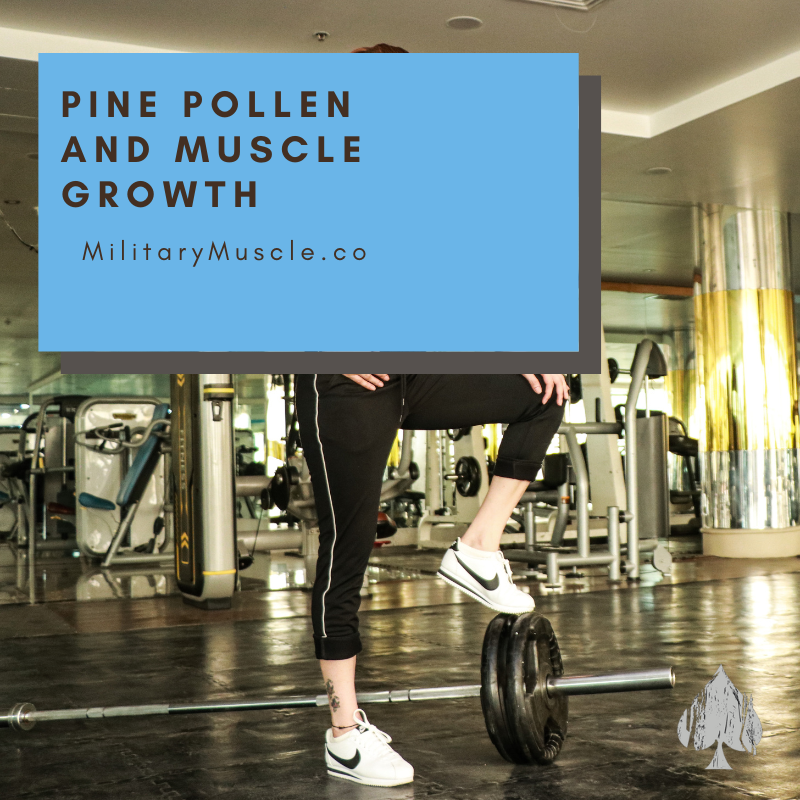Pine Pollen Muscle Growth

Written by Ben Bunting: BA, PGCert. (Sport & Exercise Nutrition) // British Army Physical Training Instructor // S&C Coach.
-
Pine pollen has become increasingly popular. Pine pollen is a natural product that has a variety of benefits for the body. However, it's most commonly used because it affects the hormone system.
Today, building muscles and working out is a popular hobby. Many people still use synthetic androgens, substances that boost the testosterone levels in the body. These drugs can have many side effects, and they are dangerous.
So, is pine pollen a natural and effective alternative to the quick hit that anabolic steroids provide?
What is Pine Pollen?
For thousands of years, pine pollen (pinus pollen) has been used as a Chinese herbal remedy and healthy food.
Pine Pollen is the pollen from trees of the Pinus genera. It can be used in dietary supplements.
Scots Pine contains such low levels of testosterone that are unlikely to have an effect on the human body. Other species, based on preliminary research, may possess anti-inflammatory properties.
Pine pollen can be a fine powder of a bright or light yellow colour. It is mostly derived from Pinus Massoniana lamb., Pinus Tabuliformis Carrier, or other plants from the same species.
Pine pollens are known as a "natural storehouse of micronutrients" and they contain many types of amino acids, minerals and vitamins that the body needs. They also contain enzymes and flavonoids.
Pine pollen is reported to have a variety of functions, including regulating immunity and protecting the liver. It also has antitumor properties, as well as antioxidation, antiinflammatory, antiaging, lowering blood cholesterol, and lowering glucose levels.
Composition of Pine Pollen
Pine pollen contains a variety of nutrients, including polysaccharides (polysaccharides), proteins, minerals, lipids and phenolics. These nutrients contribute to the nutritional value and health benefits.
The chemical composition of pollen varies significantly across species and geographical regions. This is because it is influenced by a variety of factors, including altitude, soil, climate and soil characteristics.
Nutritional Components
Pine pollen contains macronutrients as well as minerals, vitamins and phytosterols. Its varied composition has a variety of health benefits.
1987 research shows that pollen from Scots pine appears to contain steroid molecules, however, the amount of testosterone and vitamin D in the pollen is likely too low for humans to notice any effects.
Pine pollen must be processed properly to preserve its chemical composition and health benefits. This includes drying, cleaning, sterilization and wall disruption.
Uses
Pine pollen is a green, natural food that's rich in nutrients. It has a variety of health benefits. This trend and requirement for modern nutrition product development are in sync with this.
Pine pollen, a natural green food rich in nutrients, can also be used to create a new food raw material. Its high utilization value is possible through food processing.
Pine pollen has been shown to have multiple functions in pharmacological research, including immune regulation, antiaging and antioxidation.
It also protects the liver, inhibits tumor cell proliferation, inhibits prostate hyperplasia and is antifatigue.
Pine pollen has been used in more than half of the available clinical studies as a topical treatment for skin disorders. This suggests that pine pollen could have a great deal of potential to treat skin conditions.
Side Effects
Pine pollen, either alone or in combination with other therapies, was shown to have positive effects on all clinical studies. There were no reported adverse effects attributed to pine-pollen treatment.
The study that combined pine pollen and metformin to treat type 2 diabetes reported mild gastrointestinal reactions in the pine-pollen group (e.g. bloating, diarrhea and loss of appetite), however, symptoms resolved without any special interventions. Other studies did not report any adverse events.
Pine Pollen Testosterone Research
Testosterone, epitestosterone and androstenedione were found in the pollen of Scotch pine P. silvestris L which was outlined in 1971.
There's a recent body of research that shows pine pollen has an effect on the growth of Nile Tilapia. It shows that 1.28grams per kilo of body weight resulted in maximum masculinization of the Nile Tilapia.
However, the Nile Tilapia is a type of fish.
Another 2017 study, again, in fish, shows that pine pollen resulted in slightly but significantly inferior androgenic effect, but anabolic effect was superior compared to both 17--methyltestosterone, and testosterone.
Does Pine Pollen Really Increase Testosterone?
The testosterone content in Scots Pine Pollen is too low for it to have any noticeable effects on the body, despite the fact that the concentration of testosterone is higher than in royal jelly.
There have been no human studies on any testosterone-related parameter, such as aphrodisia or muscle growth.
Can Pine Pollen Increase Muscle Mass?
We have to be very careful here, because there is a lot of information available on theinternet that suggests pine pollen can increase testosterone levels in humans, rather than just fish.
As such, readers may think that this correleates with an increase of muscle mass.
The testosterone and vitamin D levels found within pine pollen are low, and as such, would not have any direct link on testosterone in the human body and as such, have a direct effect.
However, let's remember than pine pollen is reported to include nutrients such as proteins, amino acids, vitamins and other minerals, and therefore, it may contribute to the development of lean muscle tissue.
That said, it isn't a magic nutrient that will transform your body composition.
Conclusion
Pine pollen has many pharmaceutical uses and benefits, and is mostly used as a topical agent to help with skin conditions, but can be used by itself or with other treatments.
It contains a wealth of nutrients, and scots pine also inlcudes vitamin D and small levels of testosterone.
However, these steroidal properties are very low and have yet to demonstrate any ability to imprve muscular development in the human body.



